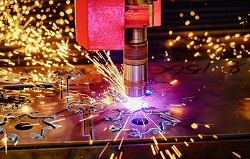Exploring particles and the manufacturing process for increased access to high-value products
A broad range of industrial sectors use particulate materials within their manufacturing processes; these includes precious metals, pharmaceuticals, fine chemicals and ceramic powders. However, in the early stages of product development, ascertaining optimum performance for high value-added products (such as pharmaceuticals and catalysts), using production scale systems is impossible with conventional experimental approaches. This is due to the required amount of feed powders (>100 kg) which is expensive and costly (> EUR 10 000 per kg). With the absence of computer-modelling tools, researchers have had to reply on laboratory and pilot-scale systems, with the challenge of then scaling-up to production. IPROCOM combined the disciplines of chemical engineering, process engineering, pharmaceutical engineering and computer science, to develop in-silico process models for roll compaction. These predict the manufacturing process performance of various formulations, based on a thorough understanding of the entire manufacturing process and its constituent products. A systematic approach to optimised manufacturing The complicated nature of the manufacturing process itself added significantly to the IPROCOM challenge, as the project coordinator Professor Chuan-Yu Wu summarises. ‘Powders experience different stress states and hence their mechanical response varies from process stage to process stage. The team therefore had to take a systematic approach, by first studying the properties of intermediate (ribbons/granules) and final products (tablets/pellets/components), based on the properties of individual particles with identified optimal process conditions and formulations.’ The team studied the characteristics of particles and powders. They identified critical material attributes (i.e. particle properties) that dominate bulk powder properties, alongside the investigation and quantification of the dynamics and microstructures of mixtures. They also analysed the impact of powder properties, roll compactor type and process parameters, on the manufacturing process. Additionally, the effect of ribbon properties and milling mechanisms on granule properties were studied using a multiscale approach. Modelling and computational techniques were applied, with the discrete element method (DEM) used to investigate the powder filling, mixing and feeding processes, along with segregation phenomena, uniformity and the flow rate. IPROCOM also investigated how powders’ performance in roll compaction were affected by particle properties and process conditions. The finite element method (FEM) identified the critical material properties and process parameters controlling granule and tablet quality. Modelling predictions were then made of how granule properties and process parameters affected die filling, powder compaction and ejection. IPROCOM also developed a Computational Intelligence (CI) model which augmented understanding of; powder mixing to identify critical particle properties and critical process variables; roll compaction processes and critical powder properties; the ribbon milling process; and die compaction to identify critical material properties and process conditions. Harnessing the winning formulas As Professor Wu explains, ‘IPROCOM enabled the evaluation of a variety of processing techniques, identifying those best matched to dominant mechanical powder responses during the manufacturing process.’ The project underlined the importance of the process control design in roll compaction and has already resulted in LB Bohle (an associate partner), significantly improving performance. The combined DEM and FEM modelling approach has, for the first time, revealed the underlying mechanisms for ribbon density variation, which can be used to accurately predict the roll compaction process. Additionally, as the computational intelligence models were developed to be generic in nature, so they have great potential for wider applications (e.g. drug release and continuous manufacturing). By reducing high-value product development costs, hence ultimately market price, IPROCOM helps make products more accessible to EU citizens. As Professor Wu puts it, ‘This could have a marked health and wellbeing benefit when applied to pharmaceuticals, with companies making new medicines available faster and at less cost.’







